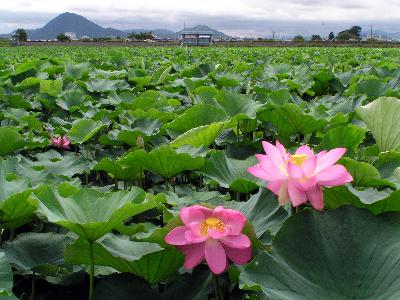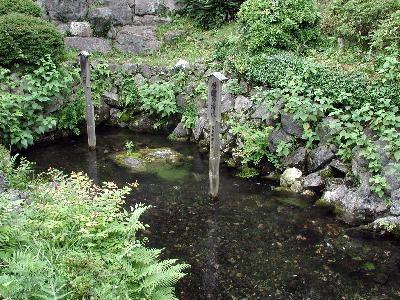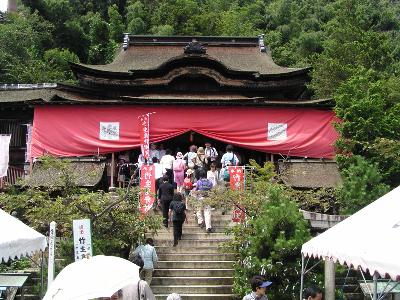|
Karasuma Peninsula features an extensive community of lotuses, which spread across Kusatsu in Shiga Prefecture. Stretching out for as much as 9.3ha, there is nowhere else in Japan that has so many lotuses in one place.
Lotuses flower between the middle of July and the middle of August. The best time to appreciate them is early in the morning around 6 a.m. The scene of thousands of lotus flowers swaying above the leaves is simply mesmerizing and takes viewers into a timeless bewitching world.
Alongside the lotus area is an aquatic botanical garden established by Kusatsu town and called Mizu-no-mori (Water Forest), with over 200 species of plants. The garden includes all sorts of lotuses and water lilies, and has a greenhouse (where many Southern garden plants and seeds are cultivated), as well as a small theater, which screens films and picture shows of lotus gardens and all kinds of lotuses.
During the lotus-flowering season, the garden opens earlier than usual at 7 to allow the people who have come to enjoy the lotuses to be able to relax afterwards.
The lotuses of Karasuma Peninsula make a charming and captivating spectacle, harmonizing perfectly with the scenery of nearby Lake Biwako.
Lotuses flower between the middle of July and the middle of August. The best time to appreciate them is early in the morning around 6 a.m. The scene of thousands of lotus flowers swaying above the leaves is simply mesmerizing and takes viewers into a timeless bewitching world.
Alongside the lotus area is an aquatic botanical garden established by Kusatsu town and called Mizu-no-mori (Water Forest), with over 200 species of plants. The garden includes all sorts of lotuses and water lilies, and has a greenhouse (where many Southern garden plants and seeds are cultivated), as well as a small theater, which screens films and picture shows of lotus gardens and all kinds of lotuses.
During the lotus-flowering season, the garden opens earlier than usual at 7 to allow the people who have come to enjoy the lotuses to be able to relax afterwards.
The lotuses of Karasuma Peninsula make a charming and captivating spectacle, harmonizing perfectly with the scenery of nearby Lake Biwako.
| [+ADDRESS] | 
|














